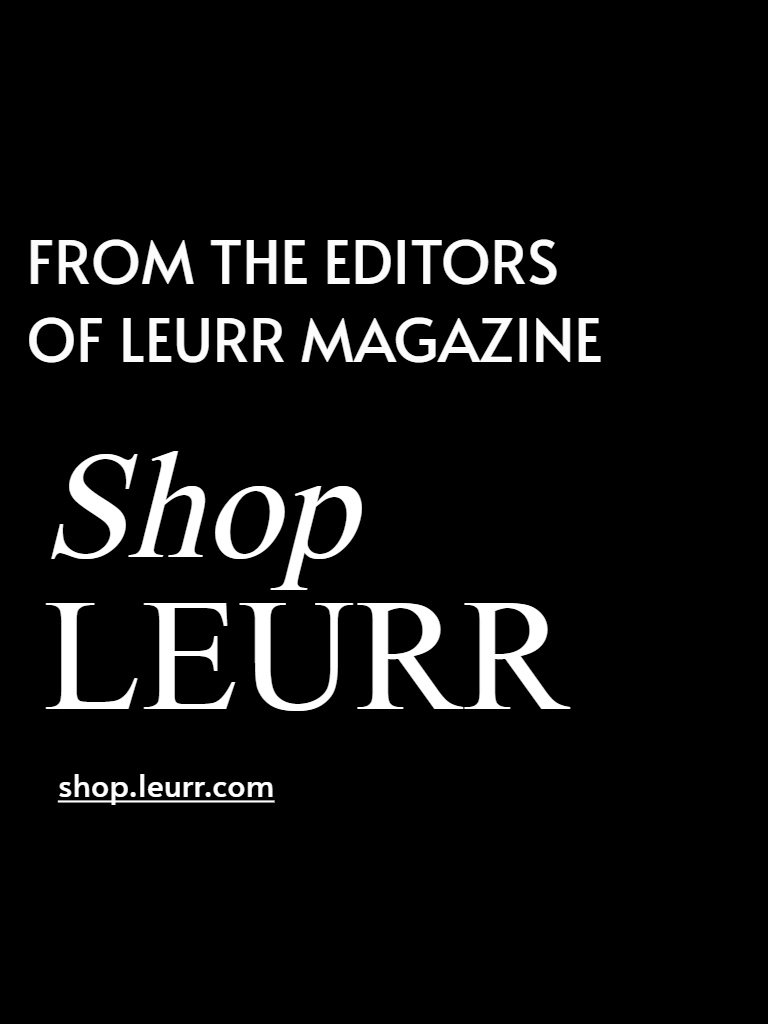Long before the fashion world became saturated with designer collaborations, there was a groundbreaking moment that forever altered the landscape of luxury branding. It was the early 2000s, and Marc Jacobs, then the creative director of Louis Vuitton, was on a quest for something fresh and revolutionary. His journey led him to the vibrant and eclectic world of Takashi Murakami, a Japanese pop artist whose work was making waves in the art scene. After being captivated by Murakami’s stunning artwork at an exhibit at the Fondation Cartier in 2002, Jacobs saw an opportunity to fuse high fashion with contemporary art in a way that had never been done before.
READ MORE: The Louis Vuitton cruise 2023 show highlights
With a bold vision in mind, Jacobs reached out to Murakami, inviting him to reimagine Louis Vuitton’s iconic monogram—a symbol synonymous with luxury and heritage. This collaboration was not just a merging of two creative forces; it was a cultural phenomenon that challenged the status quo of fashion. The result? A dazzling line of handbags that combined Murakami’s playful, colorful designs with Vuitton’s timeless elegance.
Celebrities like Paris Hilton, Kim Kardashian, and Regina George from “Mean Girls” endorsed this collaboration, turning it into a pivotal moment in fashion that blurred the lines between art and style. It proved that creativity knows no boundaries and became the ultimate It Girl staple.
As we gear up for this new chapter, it’s essential to revisit the bold designs and innovative spirit that defined their original collaboration, reminding us why this duo remains a force to be reckoned with in the world of high fashion
2002
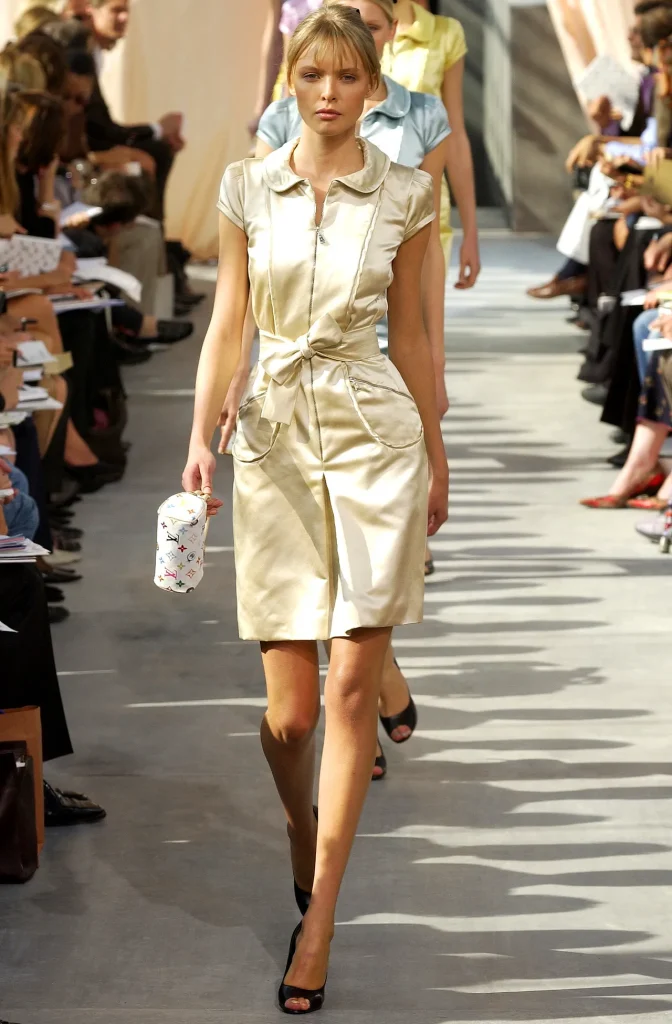
Louis Vuitton x Takashi Murakami launched their runway show in 2003, featuring classics like the Papillon, Speedy, and Keepall with Murakami’s Cherry Blossom print and Multicolore monogram. Variations included Murakami’s “Eye Love” design. The collection also featured the artist’s “Eye Love” design. Jacobs and Murakami revamped Vuitton’s classic handbags with bold bow accents, brass studs, and extra pockets, introducing the exclusive Sac Retro PM handbag model.
2003
The collaboration between Louis Vuitton and Takashi Murakami was nothing short of a cultural phenomenon, raking in over $300 million in its inaugural year alone. “When we first laid eyes on the prototypes, we were absolutely ecstatic,” Marc Jacobs shared with WWD back in 2003, candidly admitting that they had no inkling of the monumental impact this collection would have on the fashion landscape. That same year, the collection gained even more visibility when the iconic Jennifer Lopez graced Louis Vuitton’s fall campaign, showcasing Murakami’s distinctive Multicolore Dalmatian Sac Rabat. The stunning visuals were captured by the renowned photography duo Mert Alas and Marcus Piggott, adding an extra layer of glamour to the already vibrant collaboration.
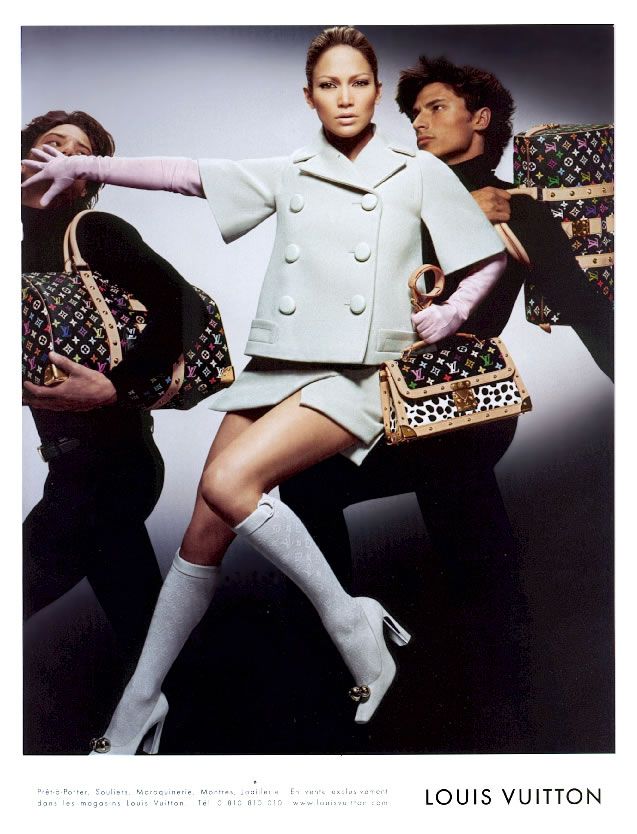
By the early 2000s, Jennifer Lopez had firmly established herself as a household name, a pop culture juggernaut. Her debut album, “On the 6,” catapulted her into the limelight, while her unforgettable Versace dress at the Grammy Awards became a fashion moment etched in history. Lopez’s star power was further solidified through her memorable roles in blockbuster romantic comedies like “The Wedding Planner” and “Maid in Manhattan,” where her charisma and style captivated audiences worldwide. The synergy between Lopez and the Louis Vuitton x Murakami collection was a perfect match, blending high fashion with the vibrant energy of pop culture, and leaving an indelible mark on both industries.
2004
Is this the bag from mean girls??
byu/emmerson813 inMeanGirls
In 2004, Murakami and Jacobs teamed up for a Vuitton drop showcasing an anime Panda print on accessories like the Pochette, Troutter, and Vavin PM. Naomi Campbell, a Jacobs confidante, starred in a Mert and Marcus campaign flaunting Murakami’s Multicolore. Meanwhile, “Mean Girls” exploded into a pop culture sensation, with the Plastics dictating fashion trends at their school. In 2005, Louis Vuitton unveiled the Cerises print by Murakami, featuring quirky fruit designs on bags like the Speedy, Pochette, Keepall, and Petit Bucket, with some limited editions flaunting lizard skin accents.
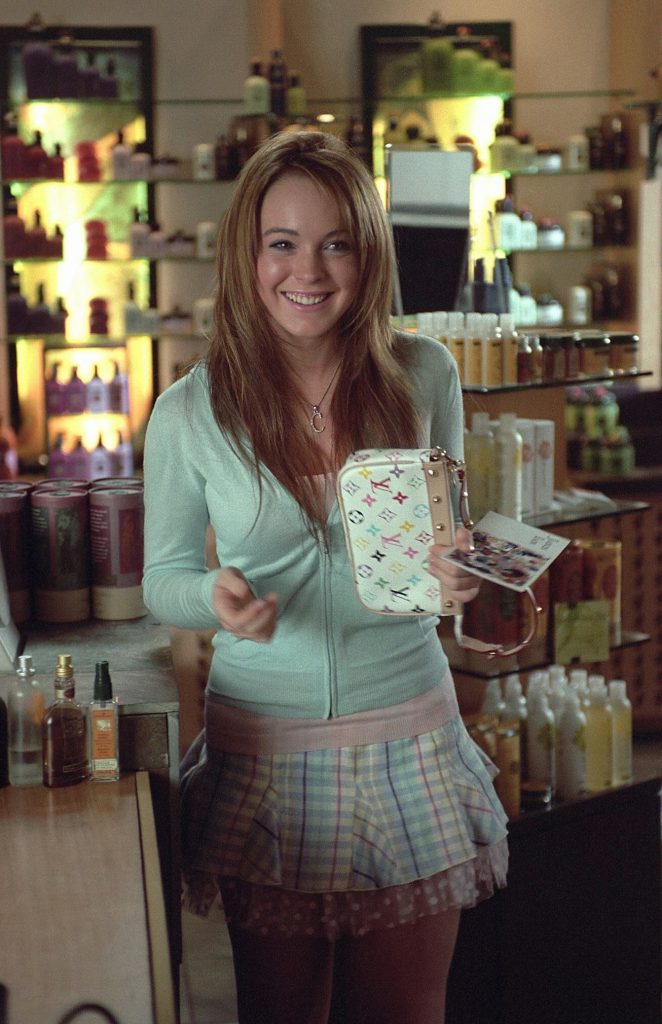
2005-2006
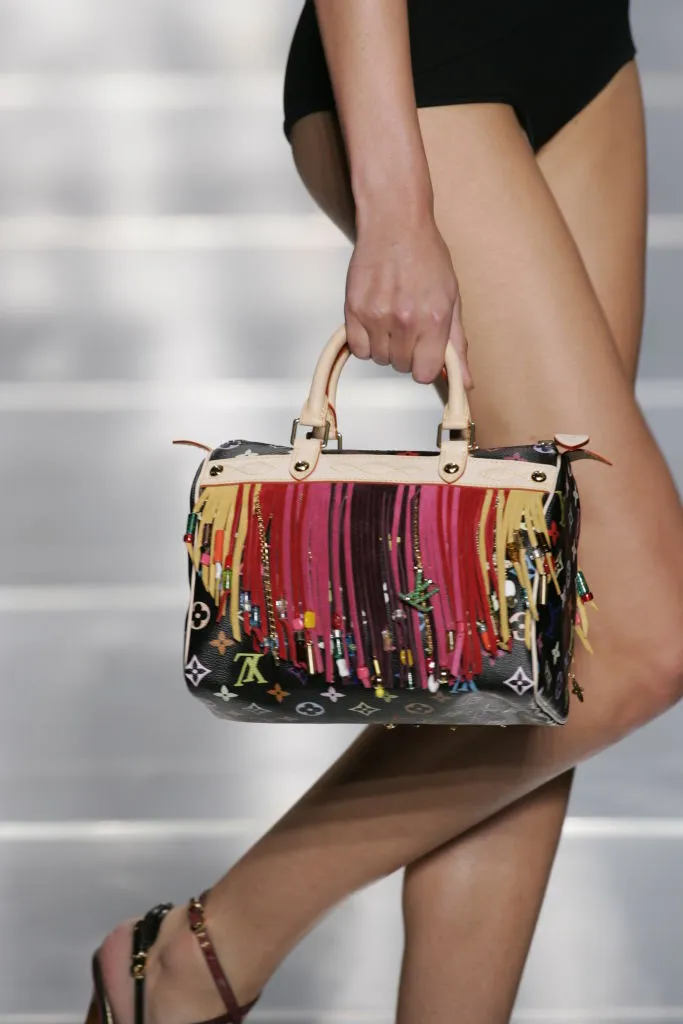
In 2005, Jacobs and Murakami launched the Multicolore print on Speedy bags, showcasing suede fringe, glass beads, and monogram-shaped pendants. By 2006, Jacobs had expanded the line with a Multicolore fur muff and fanny pack, spotted on stars like Amber Rose and Kim Kardashian. Fast forward to 2021, Virgil Abloh, Louis Vuitton’s menswear creative director, gave the concept a fresh twist with a white mink zip-up adorned with a vibrant monogram, stepping away from the Murakami collaboration.
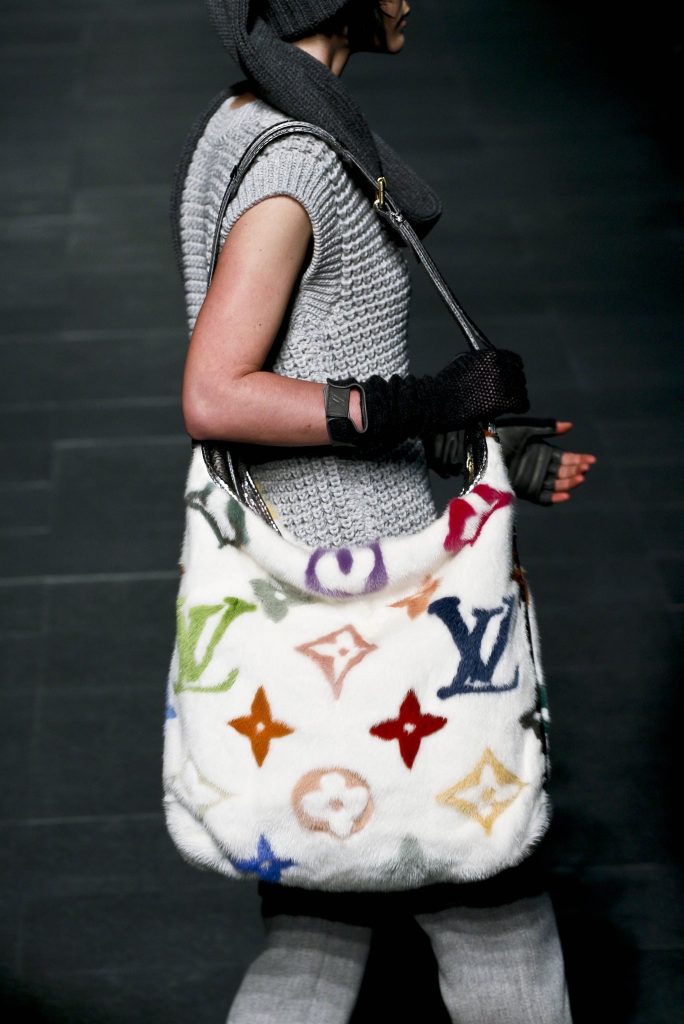
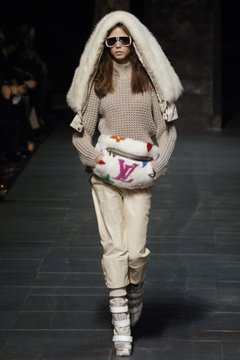
2007
In 2007, the Museum of Contemporary Art in Los Angeles became a vibrant hub of creativity as it hosted a groundbreaking retrospective dedicated to the iconic work of Takashi Murakami. This exhibition was not just a showcase of his artistic genius; it was a bold fusion of high art and luxury fashion, prominently featuring his innovative designs for Louis Vuitton. Visitors were treated to an immersive experience, with exquisite bags elegantly displayed in glass cases that seemed to elevate them to the status of fine art. Adding to the allure was a pop-up Louis Vuitton boutique, where the lines between consumerism and artistry blurred even further, inviting attendees to engage with the art in a way that was both provocative and enticing.
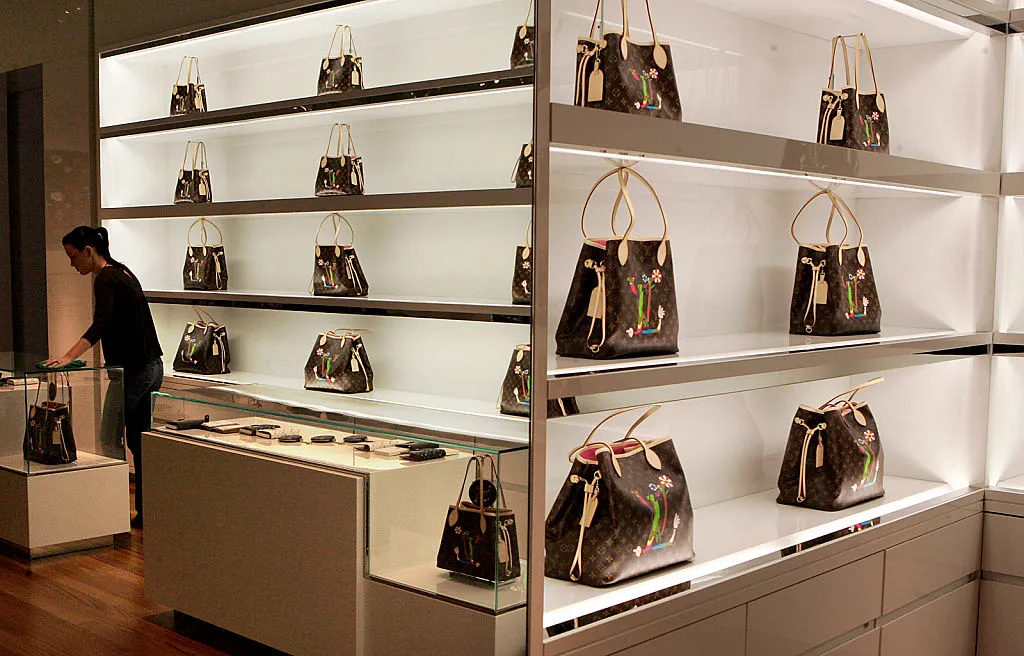
Murakami’s work delved deep into the complex relationship between art and consumer culture, a theme that resonated powerfully throughout the exhibition. This concept of in-gallery shopping was not merely a novel idea; it echoed the prophetic vision of Andy Warhol, who famously suggested that department stores would evolve into museums, redefining the very essence of art consumption. The collaboration between Murakami and Vuitton birthed exclusive designs that challenged traditional boundaries, merging the worlds of fashion and fine art in a way that was both audacious and captivating.
Among the standout pieces was the limited-edition print titled “Moca Hands,” which showcased the brand’s initials in a striking array of colorful camouflage, adorned with cheerful smiling daisies and whimsical cartoon gloves. This eye-catching logo was emblazoned on the iconic monogrammed Neverfull totes and sophisticated handheld trunks, transforming everyday accessories into coveted art pieces. The frenzy surrounding these items caused resale prices to soar, with collectors willing to pay a staggering 50% premium, reflecting the undeniable allure of Murakami’s unique vision and the cultural significance of this collaboration. The exhibition not only celebrated the intersection of art and commerce but also left an indelible mark on the landscape of contemporary art, forever changing how we perceive and interact with both.
2008
In April 2008, the Brooklyn Museum became the vibrant backdrop for a stunning retrospective dedicated to the renowned artist Takashi Murakami. This exhibition, much like the one held at the Museum of Modern Art (MOMA), showcased a striking Louis Vuitton boutique nestled within its walls, merging high art with high fashion in a way that only Murakami could envision. However, the New York gala opening introduced an audacious twist that was both playful and provocative. In a bold move that aligned perfectly with Louis Vuitton’s ongoing crusade against counterfeiters, the brand decided to take a jab at the infamous Canal Street vendors known for their knockoff goods. Outside the museum, Vuitton erected its own faux storefronts, a cheeky nod to the street vendors, but with a twist that only the luxury brand could pull off: these stalls were stocked exclusively with authentic merchandise. This clever juxtaposition not only highlighted the absurdity of the counterfeit market but also reinforced Vuitton’s commitment to authenticity in a world increasingly saturated with fakes.
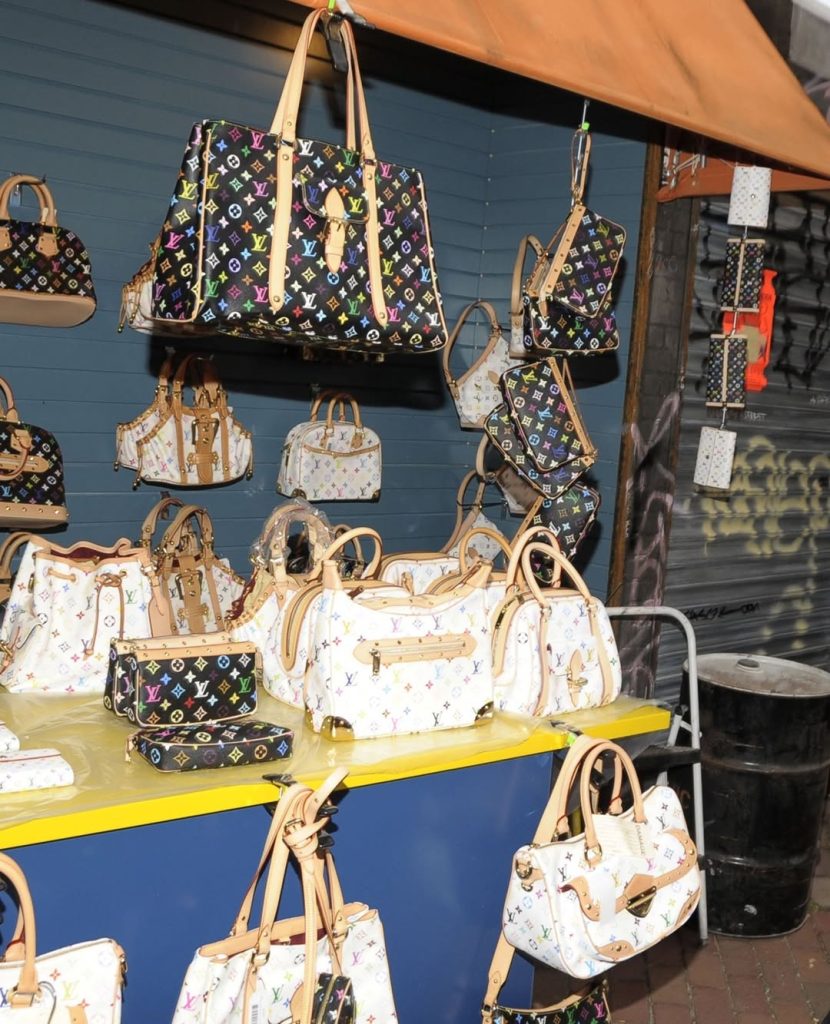
The event was a masterclass in blending art, commerce, and social commentary, leaving attendees both entertained and contemplative about the nature of value in contemporary culture.
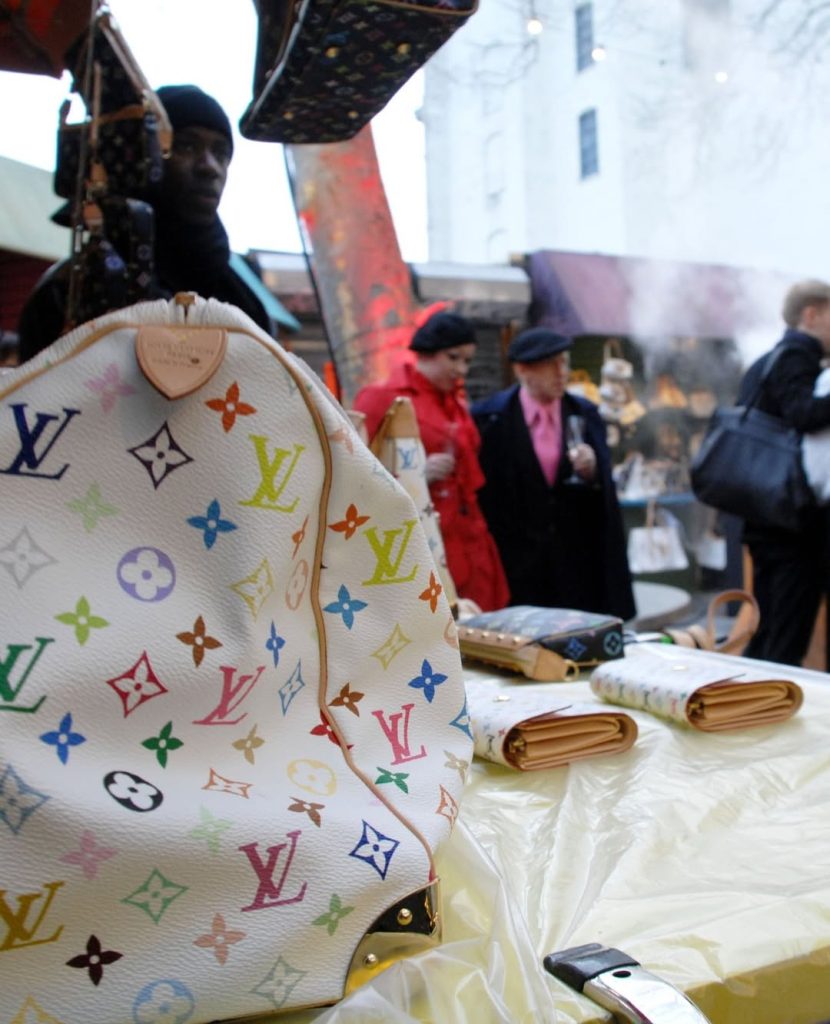
Following the Brooklyn Museum’s opening, Louis Vuitton launched the Monogramouflage collection with Takashi Murakami, featuring its iconic logo on camo designs in luggage and accessories. The brand celebrated another successful year with Murakami by adorning its New York flagship in his Multicolore monogram print and introduced a unique “Bag Bar” designed by Peter Marino, featuring moving parts.
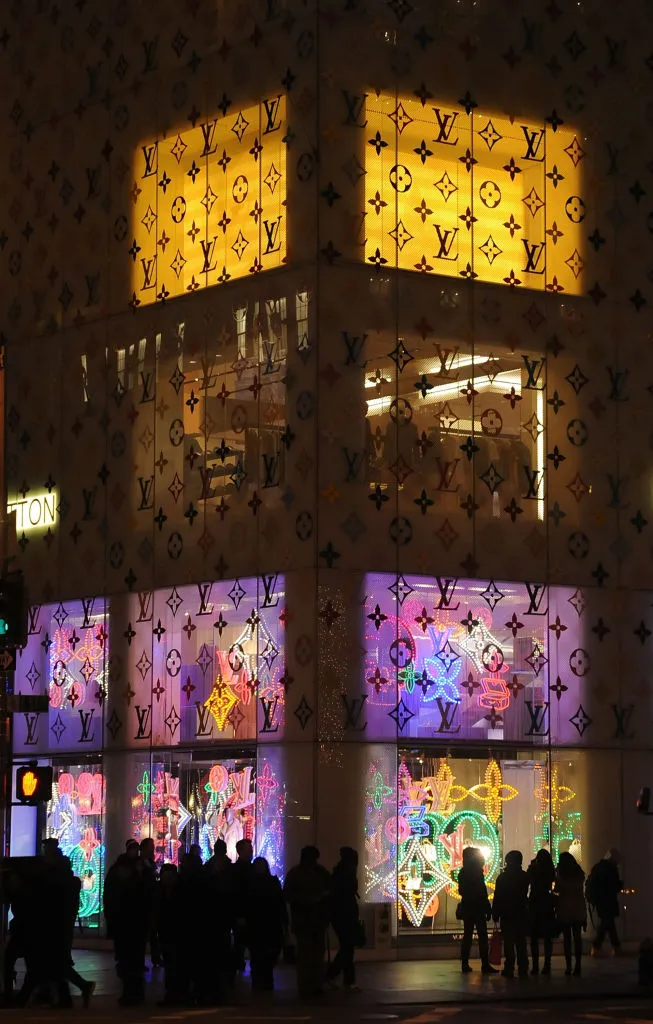
2015
In a significant turn of events, Louis Vuitton officially announced the end of its collaboration with the iconic artist Takashi Murakami in 2015. This partnership, which had redefined luxury fashion by blending high art with commercial appeal, came to a close after an impressive run that captivated the fashion world. The decision followed the departure of Marc Jacobs, the visionary designer who had been at the helm of the brand since the early 2000s, leaving an indelible mark on its identity. In 2014, Jacobs stepped down, paving the way for Nicolas Ghesquière to take over as the creative director. Ghesquière, known for his avant-garde approach and innovative designs, brought a fresh perspective to the storied fashion house, setting the stage for a new era while leaving behind the vibrant legacy of the Murakami collaboration. The shift marked a pivotal moment in Louis Vuitton’s history, as it transitioned from one creative vision to another, all while navigating the ever-evolving landscape of luxury fashion.
2025
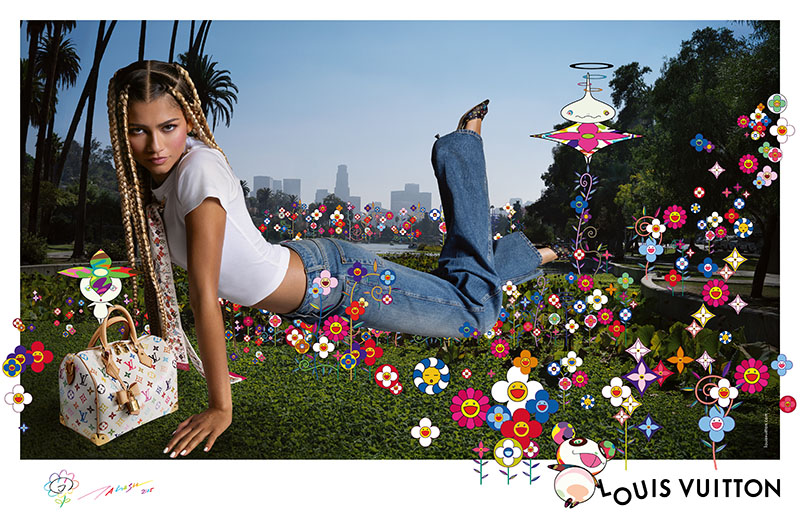
Louis Vuitton has announced its upcoming collection with Murakami, marking a long-standing collaboration. The collection, set to launch on January 1, includes new Multicolore monogram handbags, accessories like scarves, belts, headbands, and skateboards, and newer Vuitton handbag models.
READ MORE: Zendaya Stars in Louis Vuitton x Murakami Official Campaign
The re-edition also features fan favorite prints, including kawaii Panda, Cerises, and Cherry Blossom patterns, as well as newer Vuitton handbag models.

